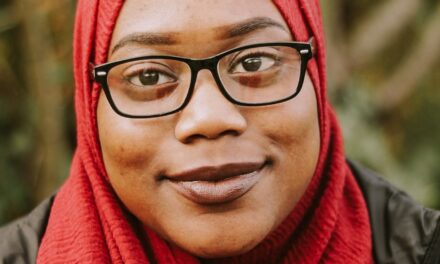Holding Space: Abesha

You look at places like the CD, the South End, and Beacon Hill: those are all places that white folks didn’t want to live in and regulate. They relegated black, Filipino, Chinese and other Asian folks into these neighborhoods — by force. These were the only places that people of color, particularly black folks, were able to live and buy a home in this city. Being forced into living in these areas, and then making such a beautiful community and space out of it…having this deep connection to this land, this space, and this neighborhood.
There’s population growth in Seattle, and there has been a tech boom over the last 10 plus years, and more density. Even before the density issue, poor white folks, mostly artists, would move in and live — especially in the CD and South End in the early to mid-2000s.
The long history of redlining definitely has a deep impact on where we are right now.
The first place people go is generally where black folks are, because of the devaluation of their property, their equity and blackness in general. Now that they can’t afford places in Madison Valley, or Laurelhurst, and these more affluent neighborhoods, they go to cheaper areas, and drive the trend.
Then I think it just kind of got worse when the tech boom made a blast. The long history of redlining definitely has a deep impact on where we are right now.
I have two memories that I’m thinking of and would like to share.
The first is when Café Avole opened. That was beautiful; one of my favorite memories. To have a space that felt like our own in a changing environment as gentrification was hitting pretty hard, was just such a beautiful reminder that we have to continuously make space for ourselves — even as things feel like they’re decaying. It’s my favorite memory because I remember Solomon Dubie fundraising, from folks in the community, and just how communities showed up for him and saw the vision and supported him was just such a beautiful reminder that our individual successes and our collective successes are intertwined.
Him succeeding opened the door for a space that felt like you’re walking into your own café, or into somebody’s home. With so much familiarity, you would just run into people. Many young professionals of color (like me) made it our office, the space where we gathered and met people — both personally and through our work. It created a hub and a gathering space, which was so needed.
I remember the opening and how excited everybody was, and how much backing and support from Black American folks and the Ethiopian & Eritrean communities Café Avole received
It was our way of connecting with the youth and giving them space that we felt we didn’t have growing up.
My second favorite memory is when my friend I were volunteering with the Ethiopian Community Center, and we put together the first Ethiopian Youth Day. It was our way of connecting with the youth and giving them space that we felt we didn’t have growing up. It was about arts, creativity, and exposing them to different forms of artistic expression. They had the space to be creative in a way they were familiar with, or that is new to them.
We felt growing up in a close-knit community in Seattle that it was always about cultural preservation, in terms of language and certain cultural elements, and not enough about artistic expression. We wanted to make space for the younger folks that were connected to the community. So that was one of my favorite days and memories.








